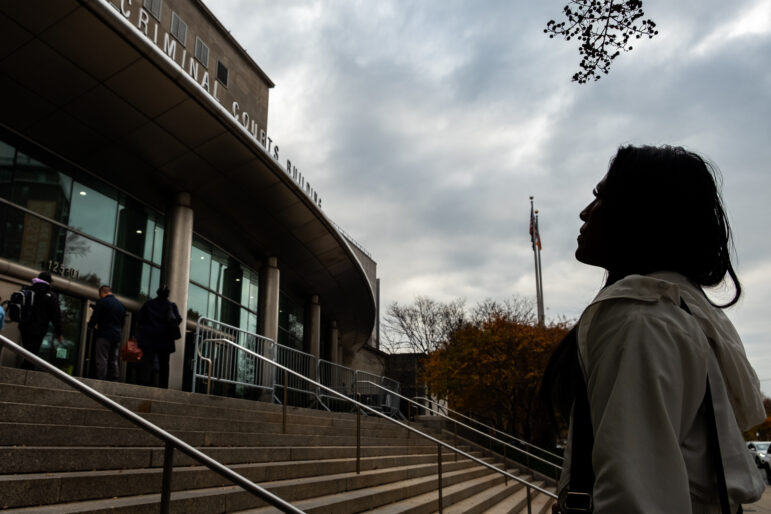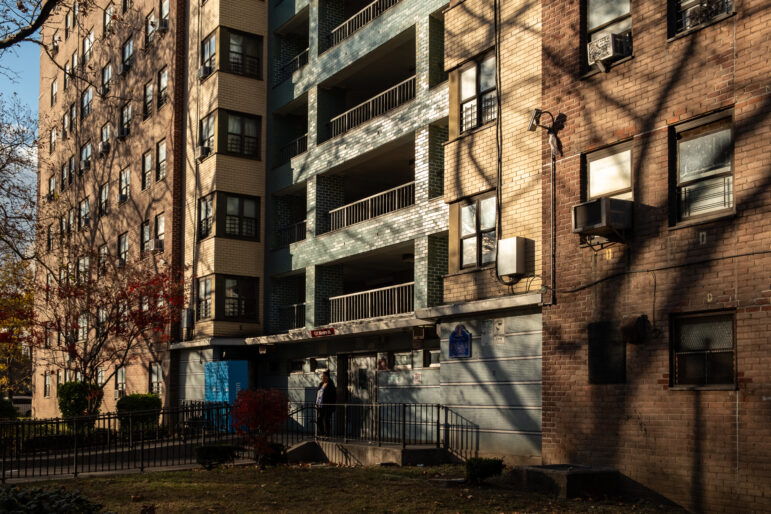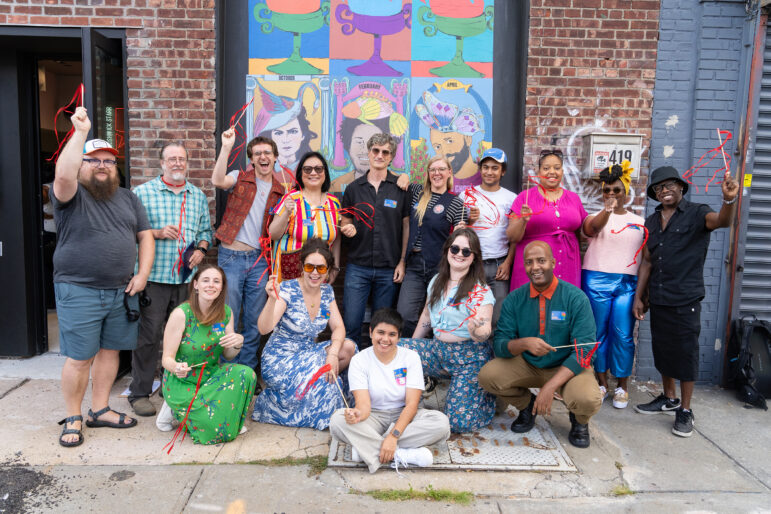Sister Mary Paul Janchill is worried–you can hear it in he tone of voice. She doesn’t want to defy the government agencies that help fund the Center for Family Life, the nonprofit family services agency she runs in Brooklyn’s Sunset Park. But she is even less willing to do what they’re asking: load sensitive personal information about some of her clients into a new statewide computer system.
And so Sister Mary Paul–and other administrators of local social service agencies across the city–wait and hope they can reach an acceptable agreement with the city before the computers are up and running. If they can’t, they have to decide whether they’ll ignore the government’s demands–and possibly pay the consequences They certainly would end up back in court where this issue has been decided before.
The issue is privacy for parents who voluntarily seek help from neighborhood social service agencies. “These are people who have never even been suspected of child maltreatment,” says Michael Arsham, director of social service policy at the Council of Family and Child Care Agencies, a coalition of child welfare nonprofits. “They’re corning forward and saying, ‘I haven’t hit my children, but I’m very close…. Can you help me?”
In fiscal year 1997, more than 15,000 families voluntarily sought and received such services–counseling, drug rehab, child care–from some 78 nonprofits that have contracts with the city’s Administration for Children’s Services. Usually, these programs succeed in keeping families together and preventing abuse or neglect. According to a United Way study released last year, only a tiny fraction–less than 1 percent–of families that participate in preventive programs lose their children to foster care.
But advocates predict far fewer people will stick around for help once they learn that information about their family troubles will be uploaded onto the computer system, dubbed CONNECTIONS, which reportedly will be running by February. “Surely when a family comes in voluntarily and signs up for counseling to avoid difficulties at home, we believe they should have protection,” Sister Mary Paul says. “My biggest concern is, if one doesn’t provide that kind of protection, the children will be at risk.”
_______
Child welfare advocates thought the issue had been decided long ago. In 1982, Sister Mary Paul’s organization was one of 13 agencies that took the State of New York to court over paperwork-filing requirements for preventive services. They won that case, and since then nothing but basic demographic information about voluntary clients has been allowed to leave each agency’s offices. Other than agency staff, the only people with access to detailed case notes are ACS supervisors, who periodically examine the files to make sure contractual requirements are met and children are fully protected.
It’s a setup family advocates say works: Clients feel their rights are protected while ACS and the New York State Department of Social Services can still monitor the programs and release the information systemwide if a report of abuse or neglect is found against a parent.
However, the city has put a high priority on making sense of its dysfunctional computer systems. For years, ACS has relied on 26 separate computer systems, each unable to communicate with the others. Many case files have been kept only on paper. As a result, important information known to a city or nonprofit worker sometimes remained hidden–where it could have been used to protect a child.
So when the federal government demanded that every state establish an automated child welfare computer system–and provided New York State with most of the $160 million needed to see that it happens here–officials set out to streamline their antiquated technology and build a thoroughly integrated system.
Now, the city wants the same data logged online about voluntary preventive service clients as for parents who arc required to get help by ACS and Family Court.
“We’re talking about very sensitive information like HIV status, incest, chemical dependency,” Arsham explains. He says the agencies are willing to provide clients’ names, addresses, race and a basic summary of the services they received–but they don’t want to turn over actual case assess-ments and progress notes. “Once the infor-mation has been transmitted, they can’t say with any authority who will see it,” he says. “In the future- there could be interstate systems; they could cross-check the informa-tion with income maintenance–it’s too open-ended.”
“We feel anytime someone is asked to give very, very private information about themselves and their life and their family, knowing that it will be stored on a statewide computer system for thirty years, it will have a chilling effect,” says Norma Martin, the assistant executive director at the Brooklyn Bureau of Community Service, which runs two ACS-funded preventive service programs.
_______
The state has left the city and the non-profits to negotiate an agreement. ACS and agency representatives met to talk about the issue, but participants say the sides were talking past each other. “They would say to us the line computer companies use, which is that computer records are safer than paper records, which is baloney,” says Susan Schwaiger, an attorney at Shearman & Sterling, the law firm representing the nonprofit agencies.
For months the agencies heard nothing and tried to remain optimistic. In mid-October, more than 200 nonprofit representatives filled the basement of the Salvation Army on 14th Street to hear more about CONNECTIONS, but there was no discussion of legal matters, no debate about system design issues.
The latest word from the city is an October 28 letter from ACS General Counsel Gerald Harris to Schwaiger and the plaintiffs from the 1982 lawsuit. “We were hopeful that the discussions would result in a modification of the settlement agreement reached 15 years ago,” he wrote. “Presently, supervision by high-level ACS management is frustrated because important case information is only available at the sites…. I urge a further serious attempt to bridge our differences and avoid a new round of litigation.”
Schwaiger says she and the advocates are unable to determine how much ACS is willing to bend. “We’re going to talk amongst ourselves, and then we need to get clarification,” she says. ACS spokesperson Maggie Lear says she cannot comment on the matter to City Limits as long as officials are engaged in discussions with the advocates.
Sister Mary Paul and other nonprofit executives say they hope to avoid litigation also–and she admits to being nervous about how this might affect her funding. Arsham says a majority of the agencies providing voluntary preventive services have signed a pledge that says they will respect the advocates’ 1982 settlement.
For Schwaiger, it’s more than just a question of whether families will get the help they need. It’s also about civil liberties and what information government can demand from its citizens.
“We’re in a world of computers and highly sensitive data, and this may be just family services, but it has implications for every citizen,” she says. “If you think, ‘Oh, something like this could never affect me,’
think again.”
_______
The people who will use CONNECTIONS like the idea of a new computer network to replace an antiquated, paper–dominated system. But they’re not sure how well this one’s going to do the job.
“We totally support CONNECTIONS in concept. It’s about time we track children in a way that is reliable and has data to base policy on,” says COFCCA’s Michael Arsham. “But the work flows they’re proposing are incredibly cumbersome. It’s not a user–friendly system. It’s counterintuitive.”
Since summer, city and state child welfare workers have been using CONNECTIONS Release 3, which produces reports, case information and documentation for Child Protective Services, the division that investigates charges of abuse and neglect and removes children for placement in foster care. Release 4–which will include foster care and preventive services cases and will also be used by the local agencies–has been delayed several times, though many agencies are already wired for its use.
Agencies are assigned CONNECTIONS computer terminals “on a case–by–case basis,” says Terrance McGrath, a spokesperson for the state’s Office of Children and Family Services. “ACS has been consulted for what makes sense for each agency.”
But one look at the 62–page draft manual of procedures caseworkers must follow to tile their data properly on CONNECTIONS reveals they will be spending a great deal of time online. Terry Ferguson laughs when asked if there are enough computers to go around at the Jewish Child Care Association, where she is a help desk analyst. “Let’s put it this way–that would be ideal,” she says carefully. At another Manhattan agency, a staff person who asked not to be identified says the state has delivered 19 computers, or about one machine for every three workers who will need it.
Agencies can add to their fleet of CONNECTIONS computers, but it’ll cost them. Exclusivity agreements with IBM and software licensing from Andersen Consulting, which designed the system, keep agencies from just calling Gateway 2000 for a quote. They will have to work with ACS to buy additional workstations–and the state couldn’t give City Limits a price.
The most nerve–wracking aspect of CONNECTIONS for the agencies, however, is how sensitive it is if you’re not very careful. “What’s scary is that it’s a very unforgiving system. For foster care, if one data element is wrong–a name is misspelled or if you drop a digit in a child’s ID number–that person doesn’t exist. They become invisible to the system,” Arsham says.
“It makes perfect sense to be concerned about that,” McGrath says. “But we won’t bring out Release 4 until we’re satisfied that those types of things don’t happen. You’ll see glitches; that’s why we test it….We may extend some of the parallel work on paper even as we start to roll it out until we’re sure it’s working absolutely perfectly.”








